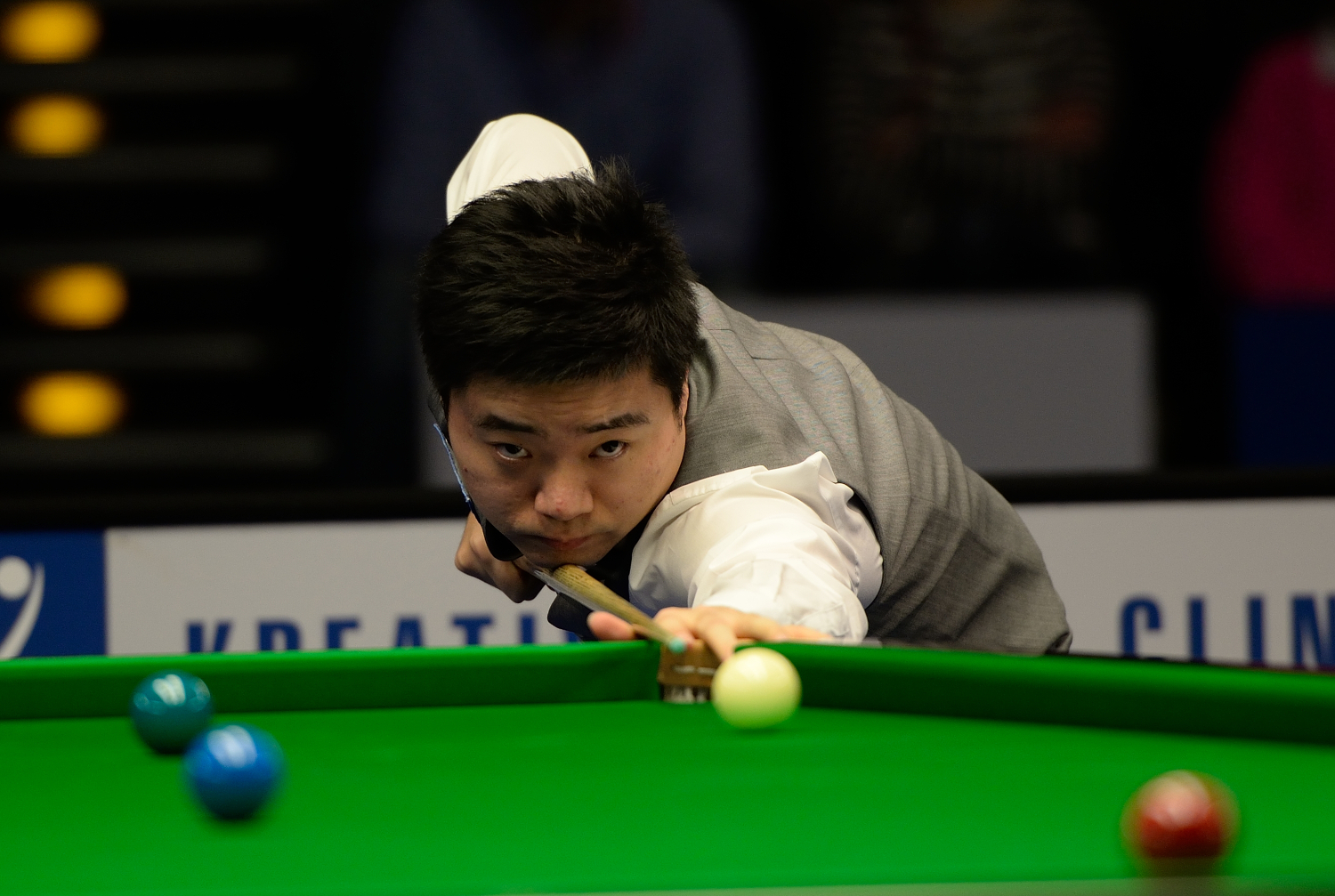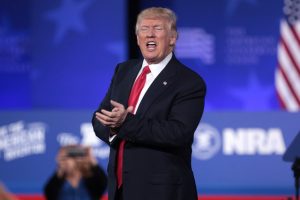by John Feffer
The final of the World Snooker Championship took place this week in Sheffield, the hardscrabble town in England’s north perhaps best known as the setting for the movie The Full Monte.
Sheffield is a former industrial center so snookered by globalization that the laid-off steel workers in that 1997 film decide to become male strippers to make ends meet. Twenty years later, Sheffield’s steel industry continues to shed jobs, largely because of cheaper steel imports coming from China.
Still, the sector is creating some new jobs as investment is also coming in from…China. Last year, a major Chinese manufacturing conglomerate, CISDI Group, chose Sheffield for its trans-Atlantic headquarters. China thus emerges as the villain and the savior of Sheffield.
Back to snooker. Invented by Her Majesty’s soldiers in India at the end of the 19th century, snooker became a quintessential British pastime. I was introduced to the game when I studied at the University of East Anglia many years ago and instantly fell in love with it.
It’s basically pocket billiards played on a bigger table with narrower pockets. There are fifteen red balls and six colored balls, and you alternate sinking the reds and the colors, accumulating different points for each color. It’s an agonizingly precise game, and good players are as adept at snookering their opponents — trapping them in difficult positions — as they are at “potting” the balls.
The Crucible Theater in Sheffield has hosted the World Championship for the last 40 years. Going back to 1927, the winners have all been players from British Commonwealth nations — mostly Brits, a few Scots, a sprinkling of Welsh and Aussies, and even one-time winners from Canada and Ireland. All of the challengers in the final round have been from Commonwealth countries as well.
Until this year.
At the 2016 World Snooker Championship final, the “jester from Leicester” Mark Selby squared off against Ding Junhui, the 29-year-old Chinese challenger. It was a close match. Coming of age in Dongguan City — the Sheffield of China — Ding has been the number two player in the world since 2014. He probably has the world’s largest fan base. Ding estimated, conservatively, that 100 million of his compatriots would tune in to watch the final match of the world championship.
This was no idle boast. There are now more snooker players in China than in the rest of the world combined. There’s even a replica of the Crucible Theater outside of Beijing, where China hopes one day to woo the World Championship away from Sheffield.
In the end, Ding lost in a close match. But he’s still young. When it comes to snooker, China will not remain number two for very long. It will eventually produce a number one player and then probably dominate the game thereafter.
In the world at large, China has been number two ever since the Soviet Union collapsed and the Chinese economy eclipsed that of Japan. It’s not easy to chart China’s future trajectory from the picture presented by Western media and think tanks. For a while, China was portrayed as swallowing the United States in a few short decades.
More recently, the pendulum has swung the other way, and China has become the fragile superpower-in-waiting. For instance, this new Foreign Affairs essay argues that, when the United States sees China in the rear-view mirror, it appears larger than it is really is:
In forecasts of China’s future power position, much has been made of the country’s pressing domestic challenges: its slowing economy, polluted environment, widespread corruption, perilous financial markets, nonexistent social safety net, rapidly aging population, and restive middle class. But as harmful as these problems are, China’s true Achilles’ heel on the world stage is something else: its low level of technological expertise compared with the United States’.
But after enduring bubbles in the real estate sector and the stock market, the Chinese economy seems to have righted itself. Indeed, Beijing continues to trumpet its bold economic plan, the Silk Road Initiative, for the Asian region as a whole. The Communist Party is deep into its anti-corruption campaign as President Xi Jinping further consolidates his power. And the Chinese military is not slinking away from the South China Sea after the United States has made a show of force in the region.
Snooker is a zero-sum game. There are clear winners and losers. But geopolitics is a multi-level game that offers various win-win and lose-lose scenarios as well. U.S.-Chinese economic cooperation belongs for the most part in the win-win category, while a war between the two countries would inevitably fall into the other.
To become number one, Ding Junhui will practice, practice, practice. He or one of his countrymen will eventually displace the Brits. But in their quest to make China great again on the geopolitical playing field, to what lengths will the current Chinese leadership go?
Xi at the Center
Xi Jinping has been the top Chinese leader for three years. Over the course of his career, he has acquired a reputation for being colorless, a dreamer, a Red princeling, a staunchnationalist, a reformer, and a reactionary. Perhaps Xi is as large and contradictory as his country: He contains multitudes. Or perhaps, it’s all a matter of Western perceptions (and misperceptions).
Take the issue of corruption. Virtually everyone inside and outside China acknowledges that it’s a major problem affecting the political and economic health of the country. Ordinary people have conducted tens of thousands of protests against the actions of corrupt officials. Many of these protests have targeted land grabs in which party officials have simply seized and sold collective property for personal gain. In 2012, furious at their venal local leaders, the residents of Wukan took over their village, forcing the central government to allow them to elect their own representatives through a secret ballot.
Then there’s the cost to the Chinese economy. Back in 2006, analyst Minxin Pei estimated that China was losing around $86 billion a year in the direct costs of corruption (kickbacks, bribes, stolen or misappropriated funds). He concludes:
This annual transfer, from the poorer to the richer, is fueling China’s rapid increase in socioeconomic inequality and the public’s perception of social injustice. Second, the indirect costs of corruption — efficiency losses; waste; and damage to the environment, public health, education, the credibility of key public institutions, and the morale of the civil service — are incalculable.
But now that Xi Jinping has launched a serious anti-corruption campaign, the Western press has turned around to focus on the costs of anti-corruption. Merrill Lynch estimated in 2014 that China stood to lose as much as $100 million as a result of the campaign against corruption — in terms of decreased consumption and less capital investment. Poor China: damned if it does, damned if it doesn’t.
More disturbing perhaps are the political costs, as outlined by Orville Schell in a penetrating analysis in The New York Review of Books. What might seem to be reform, Schell points out, is in fact reactionary:
Since it began in 2012, the campaign has already netted more than 160 “tigers” whose rank is above or equivalent to that of the deputy provincial or deputy ministerial level, and more than 1,400 “flies,” all lower-level officials. But it has also morphed from an anticorruption drive into a broader neo-Maoist-style mass purge aimed at political rivals and others with differing ideological or political views. To carry out this mass movement, the Party has mobilized its unique and extensive network of surveillance, security, and secret police in ways that have affected many areas of Chinese life.
Corruption is a key way for Xi to consolidate his own power and that of his supporters.
But ultimately, his reputation will rise or fall based on the performance of the Chinese economy. The stock market crash in August 2015 and the dip in January 2016 prompted dire predictions of Chinese economic decline. Growth is indeed down. The government is pumping stimulus funds into the economy to keep key industries afloat and workers employed (such infusions are creating the oversupply of cheap steel that is, for instance, adversely affecting the British industry in Sheffield). If Beijing can’t keep factories humming and people employed, it faces the prospect of imminent regime change from below.
But it’s also possible that the Chinese economy is simply stabilizing at a lower level of growth: between 6 and 7 percent, compared to the double-digit surges of the 1990s and 2000s. But even at this lower rate, Chinese economic expansion is the envy of the United States (current growth between 2 and 3 percent) and Europe (between 1 and 2 percent). China is becoming, slowly, a post-industrial country whose economy relies more heavily on consumption and services than production for export. Such transitions are never entirely smooth.
The question remains: Will China be satisfied with a post-industrial future like Europe (prosperity) or will it demand one more like the United States (prosperity plus preeminent power)?
Dream or Nightmare?
It’s been nearly four years since Xi Jinping made his “China Has a Dream” speech outlining the path by which his country could achieve superpower status.
In talking with non-Chinese, Xi emphasizes that the dream is about making life better for Chinese people. But the “Chinese dream” means different things to different Chinese. Here, for instance, is the interpretation offered by an eminent Chinese professor of international relations, Shi Yinhong, as reported to Paul Hartcher in the Sydney Morning Herald:
First, Xi wants China to be acknowledged as a superpower equal to the U.S. Second, he wants China to become the co-manager of global affairs with the U.S., a Group of Two for world governance. Third, “China must be the preponderant power in the Western Pacific and have some advantage over the U.S.”
The two visions are, of course, related. U.S. prosperity is built on the foundation of U.S. superpower status. Why shouldn’t China aspire to the same felicitous combination?
But this second interpretation necessarily brings China into confrontation with the United States, particularly in the Pacific and, more specifically, in the South China Sea. In brief, China has claimed sovereignty over a large gulp of this critical waterway. Those claims directly clash with those of the Philippines, Vietnam, and several other countries. The Philippines, after several direct maritime confrontations with China, decided to bring the issue to international arbitration through the judicial body of the International Law of the Seas convention, of which both countries are party. The decision of that body is expected in the coming weeks.
In the meantime, China has been asserting its territorial claims by, essentially, creating more territory. Bringing up sediment from the sea floor, China has built seven little islands in the Spratly chain, which lies about 500 miles from the Chinese mainland and is much closer to the Philippines. These are not for holiday resort purposes. There are airstrips, port facilities, and military buildings. Some outside observers expect China to react to an international tribunal ruling in favor of the Philippines by undertaking similar construction work on the Scarborough Shoal.
But take such predictions with a grain of salt. China specialist Bonnie Glaser, who is no “panda hugger,” doesn’t expect China to act rashly, as she told the publication Breaking Defense:
One People’s Liberation Army officer “with stars on their shoulders” told her island-building on Scarborough is “very, very unlikely,” because Beijing is well aware how badly the region would react. Such action would blatantly violate both China’s 2015 pledge to cease island-building and its 2002 Declaration of Conduct with the Association of South East Asian Nations (ASEAN). China has broken both promises before, but never so egregiously as building on Scarborough would be.
The United States has fired some brush-back pitches at China, what it calls “freedom of navigation” operations, such as sailing a destroyer through the South China Sea and flying jets above it. But it’s important to point out that, for all the warnings issuing from Washington, the South China Sea is not a vital national security question. U.S. territory is not at risk. China is not threatening the sea traffic that flows through the area. Rather, with its shows of force, Washington wants to remind everyone that it remains the preeminent Pacific power.
The same holds true on economic issues. Donald Trump recently made waves by asserting that America “can’t continue to allow China to rape our country” on trade issues. President Obama made the same argument, but in more polite terms, in a Washington Post op-ed this week, in which he stated that America, not China, should write the international rules of trade. These were both the economic equivalents of sending a shot across the bow to remind China who is — or should be — number one.
Trump keeps insisting that he will make America great again, harkening back to some mythic time when America ruled the world without opposition. Xi Jinping similarly wants to make China great again, but he’s alluding to a much more authentic historical period when China was indeed the center of the world for hundreds and hundreds of years. America has suffered a few humiliations over the last couple decades — Vietnam, Iraq — but it remains the world’s strongest power. China, meanwhile, spent a far greater time carved up and controlled by colonial powers. So, it’s entirely understandable why Xi’s message of national renewal resonates so strongly in China.
The reality, however, is that whatever greatness the United States and China can achieve in the future depends on their mutual cooperation. The two countries have put forward rival trade plans. They have also articulated rival regional security frameworks. At some point, this kind of parallel play will lead to a zero-sum confrontation. And that’s when Washington and Beijing will suddenly discover that, in their separate attempts to become great again, they have quite irreparably snookered themselves.
Reprinted from Foreign Policy In Focus






China’s east coast is vulnerable to attack – which wouldn’t matter if Washington weren’t so paranoid and jealous and insecure. Turning those otherwise useless rocks in the South China Sea into military installations is a good idea, if only China had prioritized negotiating with others who claim to have a claim. China claims to value win-win situations, but didn’t apply that principle to this particular situation. So now the US has an excuse to mix it up with China. Maybe Washington will succeed in turning China into Evil Empire II, returning the US to the good old days of the Cold War with massive and ongoing arms races that will prop up America’s otherwise doomed economy. After all, the Pentagon lives by the superstition that if you want peace, you have to prepare for war.
“It’s basically pocket billiards played on a bigger table with narrower pockets.”
Write carefully, Feff.
If you’ve ever seen Ronnie O’Sullivan produce a Maximum, you’d write otherwise. Go to YouTube and watch any or all of Mr. O’Sullivan’s world record 13 maximums.
You can fool with foreign policy, but be mighty, mighty, mighty careful with Snooker.